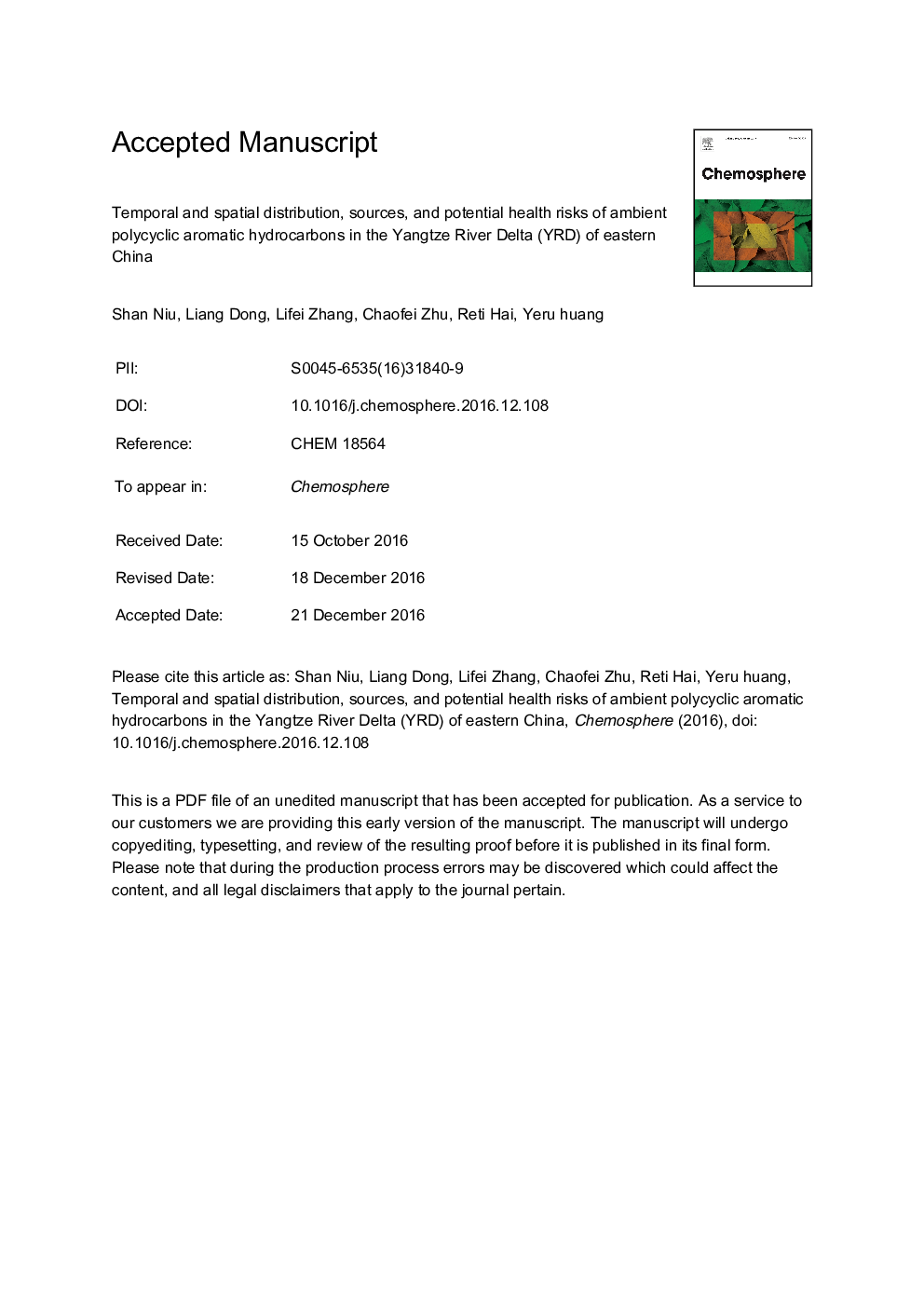| Article ID | Journal | Published Year | Pages | File Type |
|---|---|---|---|---|
| 5747062 | Chemosphere | 2017 | 36 Pages |
Abstract
In this study, from July 2011 to June 2012, 31 sampling sites were identified in order to investigate the concentrations and sources of polycyclic aromatic hydrocarbons (PAHs), as well as to evaluate their potential health risks in the cities of Suzhou, Wuxi, and Nantong, which are located in the Yangtze River Delta (YRD). The samples were collected by means of passive air sampling (PAS), and the contents of 15 PAHs were detected by gas chromatography-mass spectrometry. The â15PAHs concentrations were found to range from 6.48 to 154 ng mâ3, with an average value of 56.8 ± 14.8 ng mâ3. The pollution levels in Suzhou and Nantong were higher than those in Wuxi. Furthermore, the concentrations of the PAHs in the urban sites were determined to be higher than those in the suburban sites for ambient air. The seasonal average contents were found to be at a maximum in autumn, with concentrations reaching 74.1 ng mâ3. Vehicle emissions and coal/biomass combustion were the dominant sources of the PAHs in the ambient air, with the contributions of 48% and 46%, respectively. The BaP TEQ (0.88 ng mâ3) was found to have surpassed the Chinese and Japanese dioxin emission limit, and in doing so, may have caused a certain degree of risk to human health.
Keywords
Related Topics
Life Sciences
Environmental Science
Environmental Chemistry
Authors
Shan Niu, Liang Dong, Lifei Zhang, Chaofei Zhu, Reti Hai, Yeru Huang,
